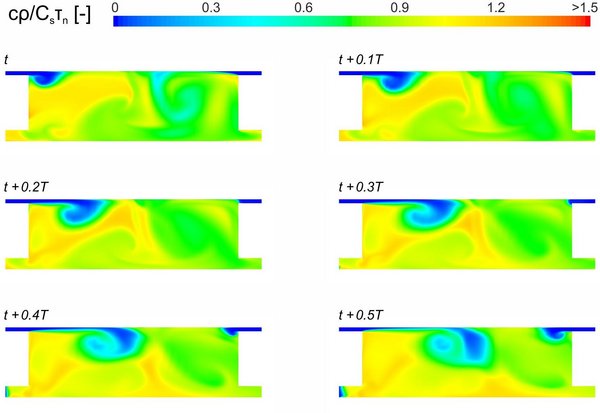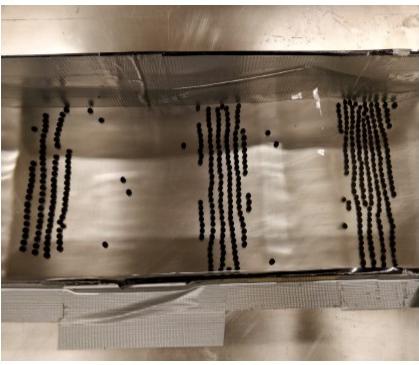A better statistical approach to sea level rise along the Dutch Coast (MSc)
It is certain that the sea level is rising along the Dutch Coast. However, the rate at which it is rising is diffcult to calculate. Even more difficult is then to know if this rate is accelerating. This is due, on one hand, to the spatial variability (i.e. it is not rising at the same rate all along the Dutch coast) which does not allow to average over space. On the other hand, it is due to the temporal variability. Even when averaging over one year to average out short-term variability (e.g. the tides), the inter-annual variability is one order of magnitude larger than the trend. This is mainly due to the wind, which has a large impact on the sea level and varies in average strength and direction from year to year (Gerkema & Duran-Matute, 2018). Using a simple linear regression model between the mean wind energy and mean sea level as a correction, reduces the variability drastically. However, this the confidence intervals are still large, and this correction is still not enough to estimate if the rate of sea level rise is accelerating.
The objective of this project is twofold:
- Determine if there is a better statistical quantity other than the yearly-averaged sea level to represent a base level over which storm surges propagate.
- Present a better statistical approach to correct the sea level time series using wind data and to estimate the rate of sea level (including its acceleration).
Supervisors: dr. Matias Duran Matute, dr. Alessandro di Bucchianico (Mathematics)
Contact: Matias Duran Matute
A dynamical systems approach to characterize time-dependent ventilation (MSc)
Optimizing ventilation (i.e. the renewal of air or water) in a semi-enclosed system is problem of great relevance in for building design and environmental flows. A common related question is how efficient is the ventilation in expelling a pollutant from the system. This depends on the geometry of the enclosure, the ow through it, and the location of the pollutant source. The use of time-dependent ventilation has been proposed as a way to improve the ventilation in the enclosure. This occurs naturally in coastal enclosures that are flushed by the periodic tides.
In this project, the problem is addressed numerically. To avoid performing one simulation for each possible location of the pollutant source, we propose to use tools from dynamical systems to characterize the transport and the ventilation in the enclosure. In particular, we propose to use Finite Time Lyapunov Exponents and Lagrangian descriptors to obtain the location of the stable and unstable manifolds, which delimit regions where particle trajectories have qualitatively different behaviors, and are hence, barriers for transport.
Supervisors: dr. Matias Duran Matute, dr. Twan van Hooff (Building Physics)
Contact: Matias Duran Matute

Evolution of particle chains under a varying oscillating flow
When particles are located under an oscillating flow, they organize in chains oriented perpendicularly to the direction of the flow. For a given type of particles, the distance between these chains is governed by the amplitude and the frequency of the flow. In this experimental project, the student will research how particles (re-)organize when the characteristics of the oscillating flow are suddenly changed. The hypothesis is that there is hysteresis in this reorganization process (i.e. it is not the same when the amplitude or frequency are increased and when they are decreased). In particular, there should be a difference in the level of order in the system before, during, and after the change. The goal of the project is then to quantify the level of order
The experiments will be carried out in an existing facility where an oscillating flow is forced through a channel with particles at the bottom. The experiments will be recorded with a camera placed over the experiment, and the obtained images will be processed using different algorithms to obtain the particle position and trajectories.
Supervisors: dr. Matias Duran Matute, Timo van Overveld
Contact: Matias Duran Matute

Evolution of sediment ripples in an oscillating cylinder
As it is commonly observed at the beach, sand ripples form under the oscillating flow produced by the waves. A common question with a lot of practical implications is “what determines the size of the ripples?” Recently, we showed that in an oscillating cylinder the ripple wavelength normalized with the excursion length depends on both a Reynolds number and the Strouhal number. This is different than in straight channels where the wavelength is proportional to the excursion length. Another difference is that ripples in an oscillating cylinder present a rich dynamic behavior where the number of ripples can oscillate even with constant forcing parameters. The objective of this experimental project is to present a probabilistic description of this behavior and to determine if certain forcing conditions are able to stabilize the wavelength.
Supervisors: dr. Matias Duran Matute, Timo van Overveld
Contact: Matias Duran Matute
